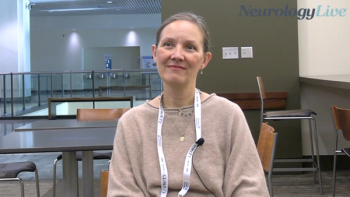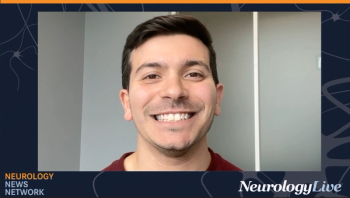
- June 2019
- Volume 2
- Issue 3
State of CBD: Thoughts From a Prescriber
A lot of hype and hope surround this treatment class, making reasonable expectations difficult to form for practitioners and patients alike.
Eric Segal, MD
I first learned about the therapeutic benefits of cannabis for epilepsy during a Dravet syndrome conference in 2012. There, multiple families from the few states that offered medical marijuana for children extolled its virtues even though their own providers could not guide them through the dosing and adverse effects (AEs) of this therapeutic class.
Now, 7 years later, parents of children with newly diagnosed epilepsy frequently request a cannabis-derived option before conventional antiepileptic drugs. Shortly after the 2013 release of Sanjay Gupta’s CNN special Weed,1 the great impact of cannabis-derived products such as cannabidiol (CBD) was felt strongly within the neurology community. Because of conflicting state and federal regulations, as well as technical challenges in studying plant-based medicines, no large-scale studies using CBD in patients with epilepsy had been conducted until an open-label trial using CBD was published less than 4 years ago.2
As most US-based clinicians have not received training in the therapeutic uses of cannabinoids, practitioners have had to overcome a significant knowledge deficit in a short period of time.3 Since 2014, multiple positive, open-label and randomized, placebo-controlled trials have been conducted, helping to create a new class of antiepileptic therapies for patients. However, given the regulatory and complex chemical nature of cannabis-derived therapies, there remains a significant amount of misinformation regarding available varieties, safety, and efficacy of this therapy.
The term cannabinoid can encompass phytocannabinoids, which are derived from the cannabis plant, synthetic cannabinoids produced in a lab, and endocannabinoids, which are endogenous neurotransmitters that bind to cannabinoid receptors throughout the body. Epidiolex (cannabidiol; Greenwich Biosciences) is the only pharmaceutical-grade CBD approved for the treatment of seizures. Given the robust effect this compound has on difficult-to-control epilepsy syndromes such as Dravet and Lennox-Gastaut, its promise of consistent concentration of active compound and of a good tolerability profile has created high interest throughout the epilepsy community. However, this excitement must be tempered by reasonable expectations. Although this therapy can be effective, it is not a cure for epilepsy and does have AEs; after all, being derived from a plant does not preclude it from having end-organ effects.4 Patients and practitioners alike need to be aware of both the benefits and limitations of this particular therapy.
Other plant-based CBD therapies, such as hemp products, may have similar efficacy and AE profiles as those of pharmaceutical-grade CBD. These options are attractive, as they are readily available for purchase online without the need for insurance approval or even a clinic visit. However, these types of cannabis-derived products have not undergone the same rigorous study needed to provide strong recommendations. Furthermore, patients may find administering hemp a challenge, as batch-to-batch consistency cannot be guaranteed in the same manner as that of an FDA-approved compound.
Medical marijuana is an additional option for residents of certain states. Each state has its own regulations and variety of strains of marijuana for purchase, which allows patients to access therapies that have significant levels of other cannabinoids besides CBD, such as tetrahydrocannabinol (THC). Unfortunately, animal models using THC have been found at times to produce proconvulsant effects.5
Treat and colleagues have provided a helpful depiction of real-world experience using medical marijuana in pediatric patients in Colorado.6 They found that the average length of use of medical marijuana was 11.7 months, and relocation to Colorado was the only factor associated with perceived seizure benefit, as 65% of families had recently moved to Colorado versus 38% who were longtime residents.
Education is Key
Providers, patients, and their families have all struggled to educate themselves on the benefits and limitations of CBD and other cannabis-derived therapies. Although many families were skeptical of using marijuana-based therapies for epilepsy 5 years ago, more recently, families have been very eager to administer CBD without having full knowledge of the specific formulation they are asking for.
When this topic arises in an office visit, I will frequently dedicate the entire time to discussing the differences among pharmaceutical-grade CBD, hemp products, and medical marijuana. For additional information, I often direct families to the Epilepsy Foundation’s online resource on medical marijuana and epilepsy.7 Although most people’s expectations are tempered by the end of the visit, my goal is only to inform—never deflate—a person’s hope for this or any other reasonable therapy.
Despite the challenges and limitations of cannabis-derived products, clinicians and patients should understand that this class of therapy is a legitimate treatment option for patients with epilepsy.
All told, I am personally open to using CBD-based therapies in addition to conventional antiepileptic therapies for patients with difficult-to-treat epilepsy. Given the possibility of lack of consistency of active ingredients and the lack of rigorous investigation, I caution patients and caregivers who are interested in or currently using hemp oils or medical marijuana. However, I have hope that increased access to these therapies, as well as ongoing studies, will help increase prescribers’ understanding of and comfort with this class.
Disclosure: Dr Segal reports relationships with Greenwich Biosciences, Zogenix, Nutricia, Lineagen, Novartis, Lundbeck, Celgene, Encoded Therapeutics, and Eisai.
REFERENCES
1. Weed - Sanjay Gupta [transcript]. CNN. Turner Broadcasting. August 2013.
2. Devinsky O, Marsh E, Friedman D, et al. Cannabidiol in patients with treatment-resistant epilepsy: an open-label interventional trial. Lancet Neurol. 2016;15(3):270-278. doi: 10.1016/ S1474-4422(15)00379-8.
3. Szaflarski M, McGoldrick P, Currens L, et al. Cannabinoid knowledge and attitudes among US healthcare providers. Presented at: 2019 American Epilepsy Society Annual Meeting; November 30-December 4, 2016; New Orleans, LA. Abstract 3.469. aesnet.org/meetings_events/ annual_meeting_abstracts/view/555794.
4. Highlights of prescribing information: Epidiolex. FDA website. www.accessdata.fda.gov/drug- satfda_docs/label/2018/210365lbl.pdf. Accessed May 12, 2019.
5. Szaflarski JP, Bebin EM. Cannabis, cannabidiol, and epilepsy—from receptors to clinical response. Epilepsy Behav. 2014;41:277-282. doi: 10.1016/j.yebeh.2014.08.135.
6. Treat L, Chapman KE, Colborn KL, Knupp KG. Duration of use of oral cannabis extract in a cohort of pediatric epilepsy patients. Epilepsia. 2017;58(1):123-127. doi: 10.1111/epi.13617.
7. Patel D and Kiriakopoulos E. Medical marijuana and epilepsy. Epilepsy Foundation . epilepsy.com/learn/treating-seizures-and-epilepsy/other-treatment-approaches/medical-mari- juana-and-epilepsy. Updated July 2018. Accessed May 12, 2019.
Articles in this issue
over 6 years ago
Aura and the Mechanism of Migraine: The Next Treatment Target?over 6 years ago
Gene Therapy Ushers in an Era of Hope for Rare Disordersover 6 years ago
Exploring the VMAT2 Pathway in Tardive Dyskinesiaover 6 years ago
Why Sleep Health Should Be Top of Mind in NeurologyNewsletter
Keep your finger on the pulse of neurology—subscribe to NeurologyLive for expert interviews, new data, and breakthrough treatment updates.



































